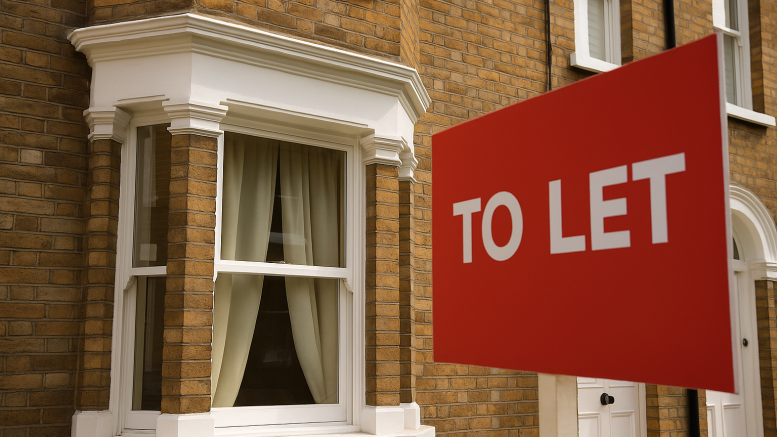The UK housing market showed signs of stabilisation in June 2025, but underneath the surface, warning lights are flashing for the private rented sector. According to the latest RICS UK Residential Market Survey, while buyer demand has finally turned positive for the first time since December 2024, landlord participation continues to decline – setting the stage for a prolonged rental supply crunch.
The Royal Institution of Chartered Surveyors found that landlord instructions fell sharply, with a net balance of -21% in June, even as tenant demand held steady at -2%. And although the pace of rent increases has eased slightly, 24% of surveyors still expect further rises in the next three months – signalling persistent upward pressure on prices, even without surging demand.
Investor pullback continues
Buyer activity has crept back into positive territory, with new buyer enquiries reaching a net balance of +3% – a substantial improvement from May’s -22%. Likewise, agreed sales recovered to -3%, bouncing back from -25% the previous month.
RICS noted that “near-term expectations for sales volumes have turned marginally positive”, with a +6% net balance in June. However, long-term forecasts remain cautious. A net balance of just +5% was recorded for expected sales over the next 12 months, suggesting any optimism is being tempered by persistent economic uncertainty.
According to Tarrant Parsons, RICS Head of Market Research & Analysis, “The UK residential market appears to be entering a more settled phase, with demand showing signs of stabilising following a period of volatility… Encouragingly, near-term sales expectations have begun to edge higher, pointing to a modest shift in sentiment.”
But what about landlords? Many are still exiting the market, deterred by rising borrowing costs, punitive tax changes, and endless layers of regulation. The drop in new landlord instructions, paired with flatlining tenant demand, creates a fragile equilibrium. If even one side shifts – whether by more landlords exiting or a small uptick in demand – the imbalance could send rents rising again.
Regional divide widens
Across England, price activity remained muted. The national net balance stayed at -7% in June, continuing a flat-to-negative trend. Yet this masks significant regional disparities.
Northern Ireland led the way with clear house price growth, alongside the North West, Scotland, and the East Midlands. Meanwhile, London, East Anglia, and the South East recorded more noticeable price drops.
One South London landlord, described the capital’s current property climate as “a minefield.” He added, “We’ve been painted as villains in this market, but the truth is, most of us are absorbing costs quietly. If things don’t change soon, more landlords will sell up – and renters will feel that more than anyone.”
This regional divergence is reflected in future price expectations. While short-term price sentiment remains cautious, 24% of survey respondents foresee price rises over the coming year – hinting that market sentiment may turn more bullish as economic stability returns.
Landlords still key to market health
Although tenant demand has cooled slightly, rents are still expected to climb. The latest net balance of +24% for rent expectations is lower than May’s +43%, but with fewer landlords entering or staying in the sector, even modest demand will continue to squeeze tenants.
“Unless policymakers stop punishing landlords, we’ll keep seeing supply shrink,” said Paul Dennison, a lettings manager in Greater Manchester. “And let’s be honest – when fewer people are offering homes to rent, prices only go one way.”
Despite the noise about cooling sales and price stagnation, the data tells a more nuanced story. Buyer interest may be stabilising, but the rental sector is on a knife-edge. With landlords still leaving in droves and tenant demand set to rebound, it’s clear: this market cannot function without a healthy and incentivised landlord base.
Whether the government chooses to recognise that before the next crisis hits remains to be seen.







